When? Where? By Whom? For Whom? Why? How?—Thinking about Caring and Motherhood through Contemporary Art
Contemporary Art Gallery, Art Tower Mito
by Arash Shahali
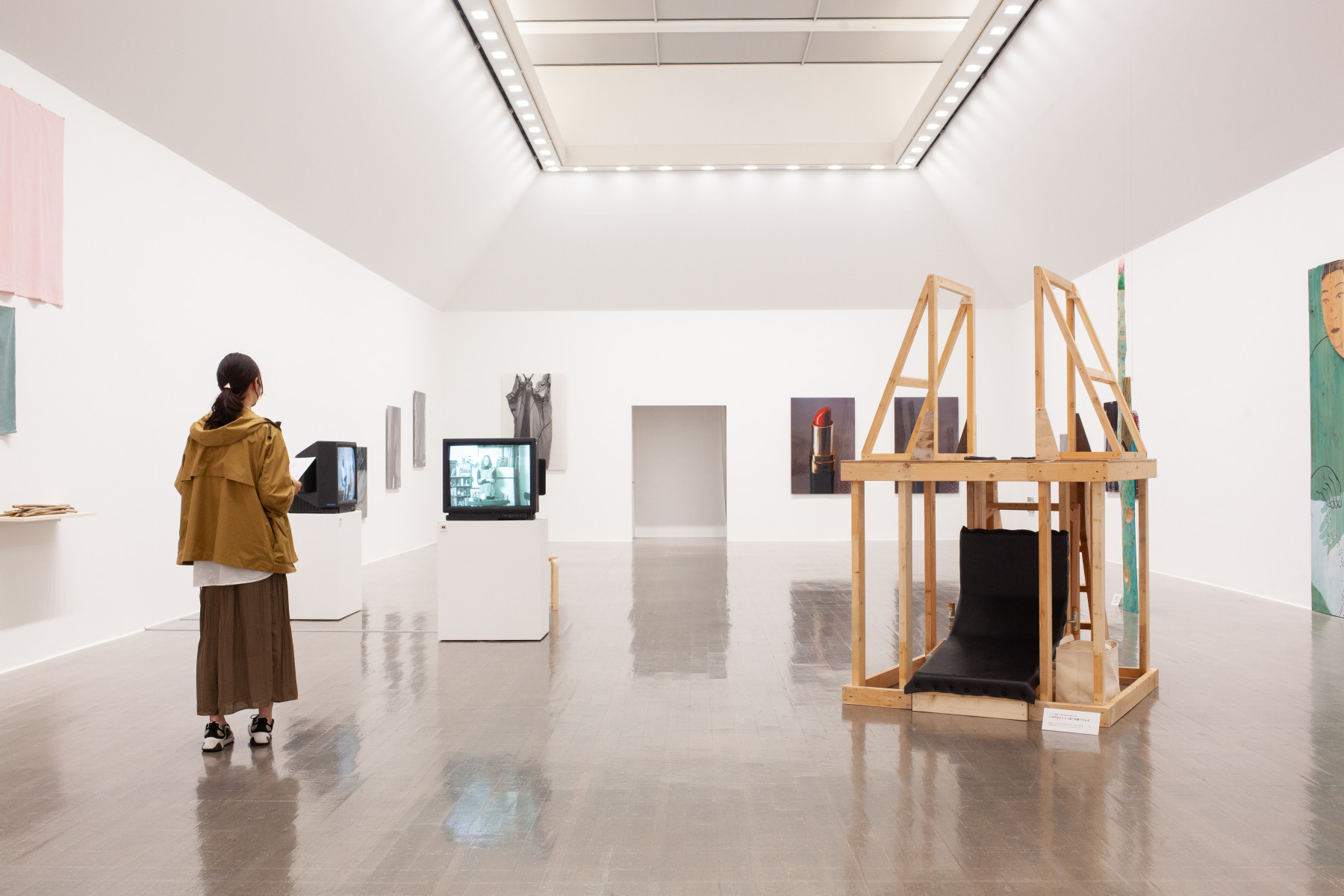
When? Where? By Whom? For Whom? Why? How?—Thinking about Caring and Motherhood through Contemporary Art, 2023. Exhibition view, Art Tower Mito. Photography: Emi Nakata
“The title makes more sense in Japanese,” assures artist Liesel Burisch when I meet them for oysters in Tokyo’s Ebisu district. We discuss my impending visit to the exhibition they are partaking in, which received the rather wordy title When? Where? By Whom? For Whom? Why? How?—Thinking about Caring and Motherhood through Contemporary Art. The show takes place at the Art Tower in Mito, capital of the Ibaraki Prefecture (about an hour away from Tokyo) and explores notions of care, both within and beyond the art world. As a beleaguered cultural press agent, art writer (?) and mother to numerous Sims 4 children—how could I not relate to this theme?
In Mito, the Art Tower looms large over the eponymous city, where it stands as the main stronghold for culture. Underneath its impressive 100-meter titanium helix (designed by architect Arata Isozaki), the complex houses a concert hall, a theatre and a contemporary art gallery. In the latter, curator Oko Goto gathered the works of fifteen local and international artists, through which the exhibition aims to seek possibilities of empowerment and examine “the placemaking that strengthens the connection between the public and care.” [1]
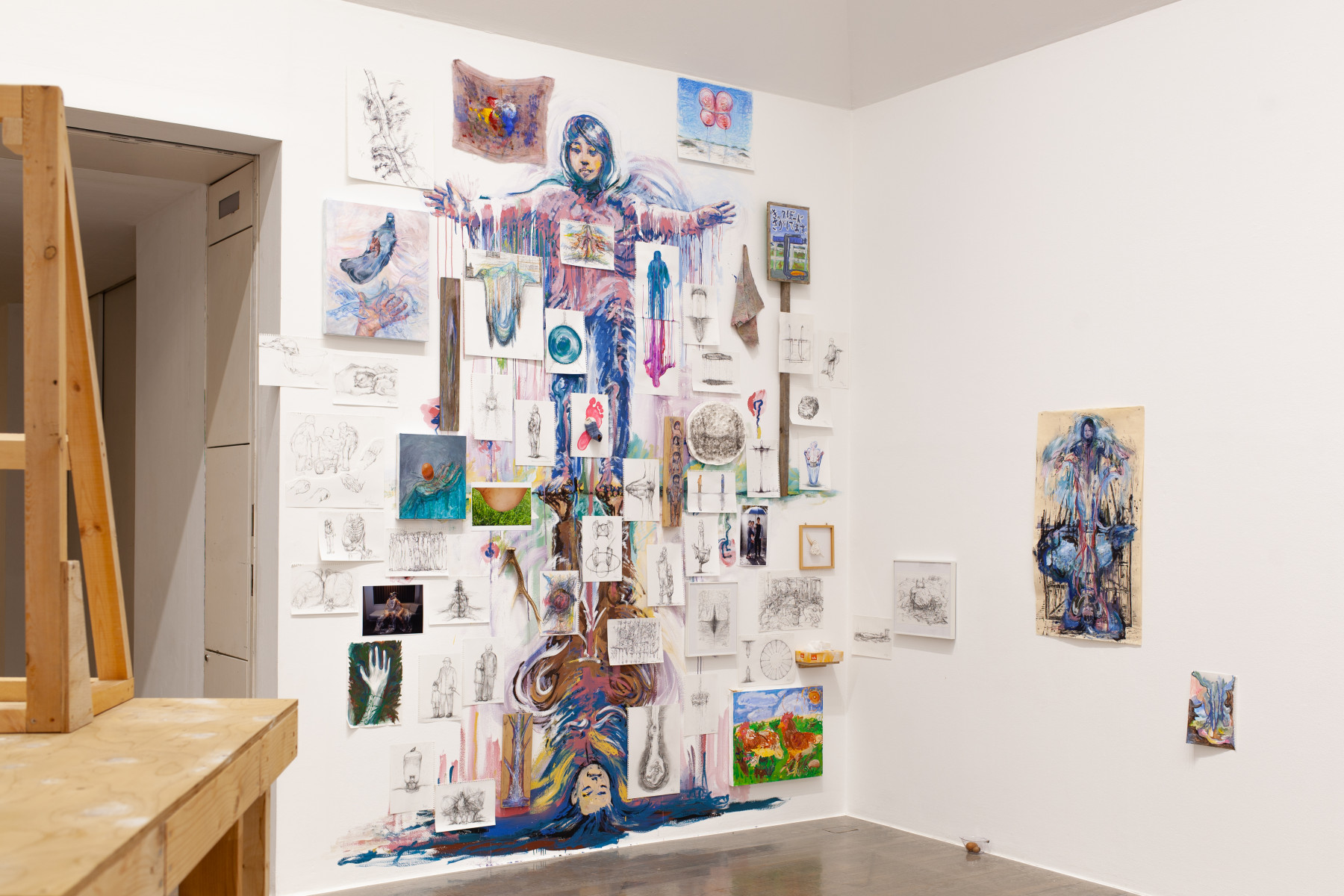
Kito Neto, Steps on Someone’s Weight, 2023. Photography: Emi Nakata
Goto alludes to the title of the exhibition being somewhat of a Trojan horse. The show is aimed to deal head-on with the intricacies of care work and human dependency, which—no matter how one slices it—still disproportionately fall into the laps of women. Framing the exhibition as a show about ‘motherhood’ rather than ‘womanhood’, however, would aid in dispelling the possible ire of conservative Japanese audiences and critics, who might trip over its feminist themes. Feminist discourse has never been a welcome guest in Japanese art history, where it was arguably first introduced by scholar Kaori Chino in her 1993 essay Gender in Japanese Art, initially inspiring a wave of interest in female artists and their practices.
However, backlash and open hostility towards feminism (in no small part amplified by unpopular gender equality policies, implemented in the late 1990s) soon made any type of exhibition-making around this framework an exercise in exhaustion. This could explain why feminist art exhibitions in Japan have been few and far between during the last couple of decades [2], and how come the effects of the #MeToo movement have been slow to take hold amongst its people. The mostly positive response to the show in Mito could imply that attitudes are shifting—or that Goto’s choice of title is at least a prescient one.
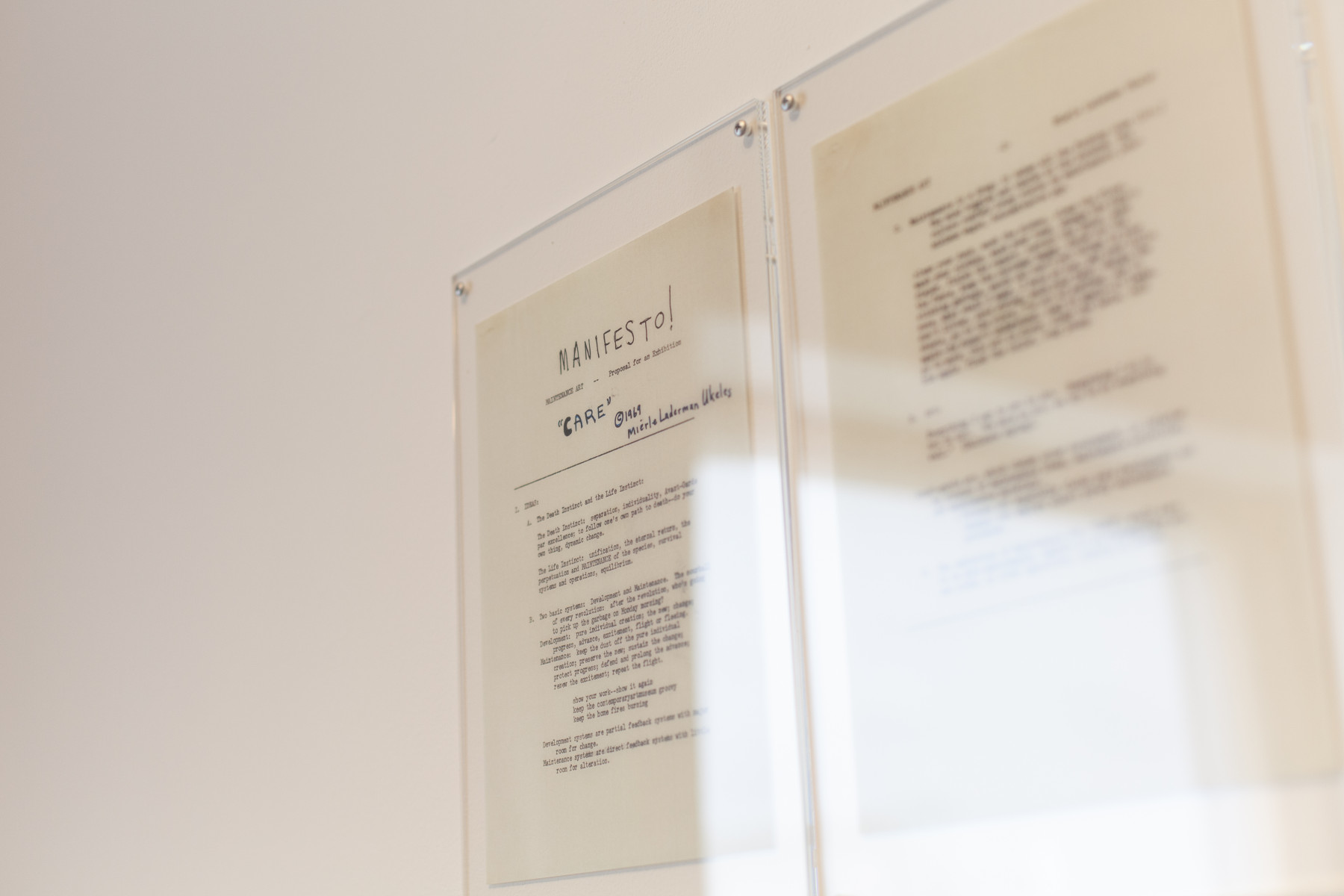
Mierle Laderman Ukeles, MANIFESTO FOR MAINTENANCE ART, 1969!, 1969. Photography: Emi Nakata
Mierle Laderman Ukeles’ MANIFESTO FOR MAINTENANCE ART, 1969!—installed prominently by the exhibition entrance—doubles as an anchor for the entire show. The three-and-a-half-page-long manifesto was Ukeles’ response to the tension she experienced between her roles as artist and mother. Only the old-fashioned typeface would suggest that this document is over half a century old; the text itself still reads as poignant and relevant to anyone currently juggling the demands of caregiving and an art world career.
Ukules calls for a reconciliation between two opposing instincts: the ‘Death Instinct’ (“separation, individuality, Avant-Garde par excellence; to follow one’s own path to death - do your own thing, dynamic change”) and the ‘Life Instinct’ (“unification, the eternal return, the perpetuation and MAINTENANCE of the species, survival systems and operations, equilibrium”). These correspond with systems of ‘development’ and ‘maintenance’, respectively. Our culture—according to Ukeles—is conditioned to favour development, maintenance’s flashier, more aspirational brother; a mode of being that is free of the time-consuming, repetitive and often tedious tasks that maintenance work entails.
Ukeles’ manifesto proposes an exhibition titled ‘Care’, a show that "would zero in on pure maintenance, exhibit it as contemporary art” consisting of three main components: personal maintenance (domestic chores performed in the museum, thereby lending them the status of art), general maintenance (interviews with audience members about their experiences with and relationship to maintenance), and Earth maintenance (with different types of waste handed over to the museum for recycling and rehabilitation). While ‘Care’ was not picked up by the cultural institutions Ukeles pitched to, it has since found its way into countless exhibitions that showcase artists participating in the practice of care.
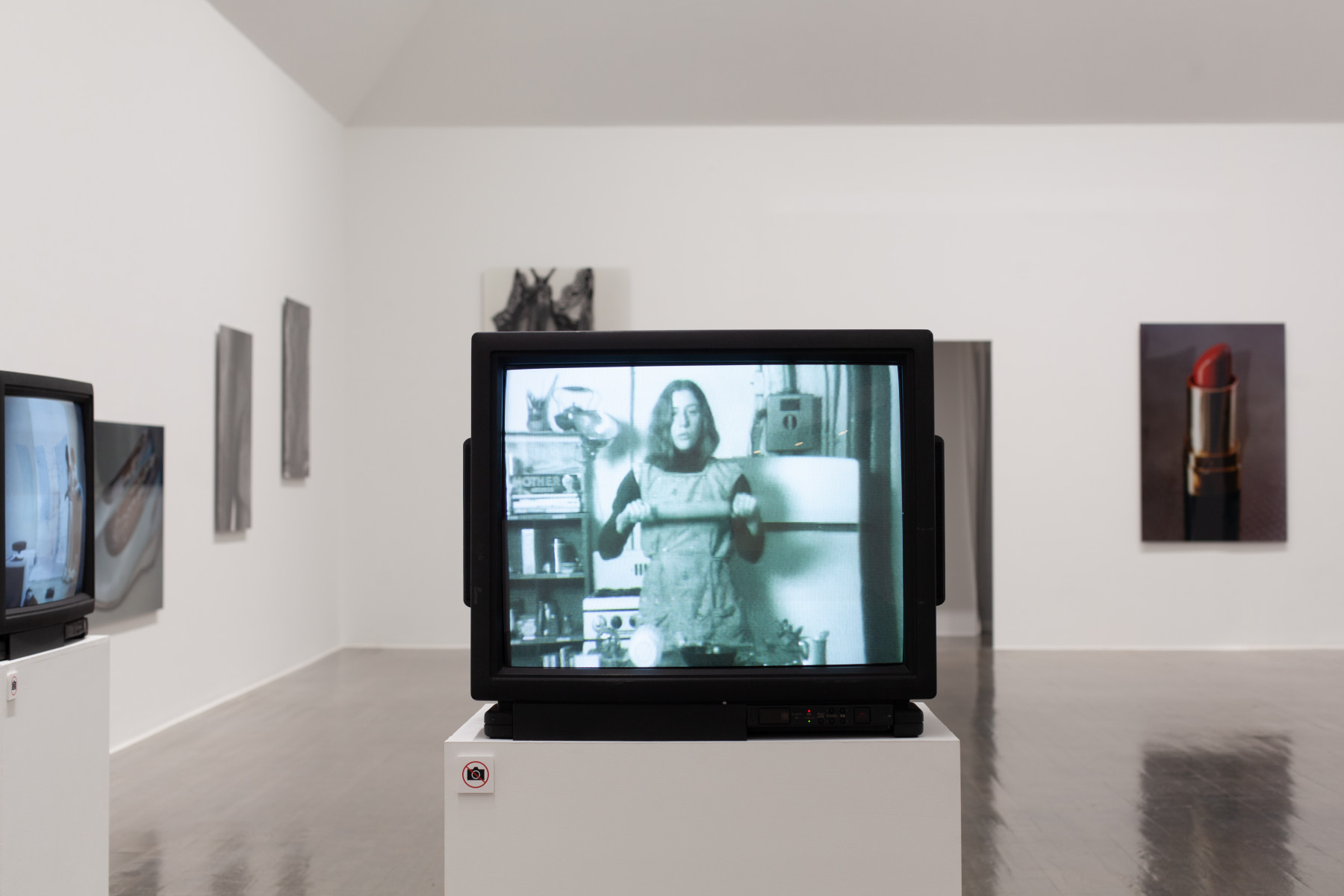
Martha Rosler, Semiotics of the Kitchen, 1975. Installation view. Photography: Emi Nakata
In Mito we see these reverberations at play as well. Martha Rosler’s 1975 video piece Semiotics of the Kitchen—in which the artist dispassionately presents various kitchen utensils, accompanied by corresponding movement—seems the logical conclusion of Ukeles’ idea of ‘personal maintenance.’ “Dish…egg-beater…fork…grader…” Underneath the monotonous line deliveries and the jerking, sudden movements of an apron-clad Rosler, there’s a simmering of the artist’s frustration with oppressive domesticity. Perhaps the kitchen—as a space of resistance—is the best place to bring that simmer to a boil. It’s a Julia Child who’s had enough!
Ryoko Aoki’s multi-media installation Notebook forgotten at a three party meeting (2018) mixes watercolour paintings with textiles, household trinkets and wilted flowers, rehabilitating them in an impressive constellation. There is meticulous attention to geometry and purposeful arrangements: carefully displaced socks and knitwear, school utensils gathered with chirurgical precision, earthy reds and blues reminiscent of blueprints. These individual objects are presented in a manner that accentuates underlying patterns. One such pattern is the notion of the triangle, referring to the three-fold structure of parent-teacher meetings in Japan, in which the child—the cared-for—is invited as a third into the meeting, to offer their perspective and experiences. This practice enables all three parties—parent, teacher, child—to formulate their needs and communally negotiate the best strategy of care.
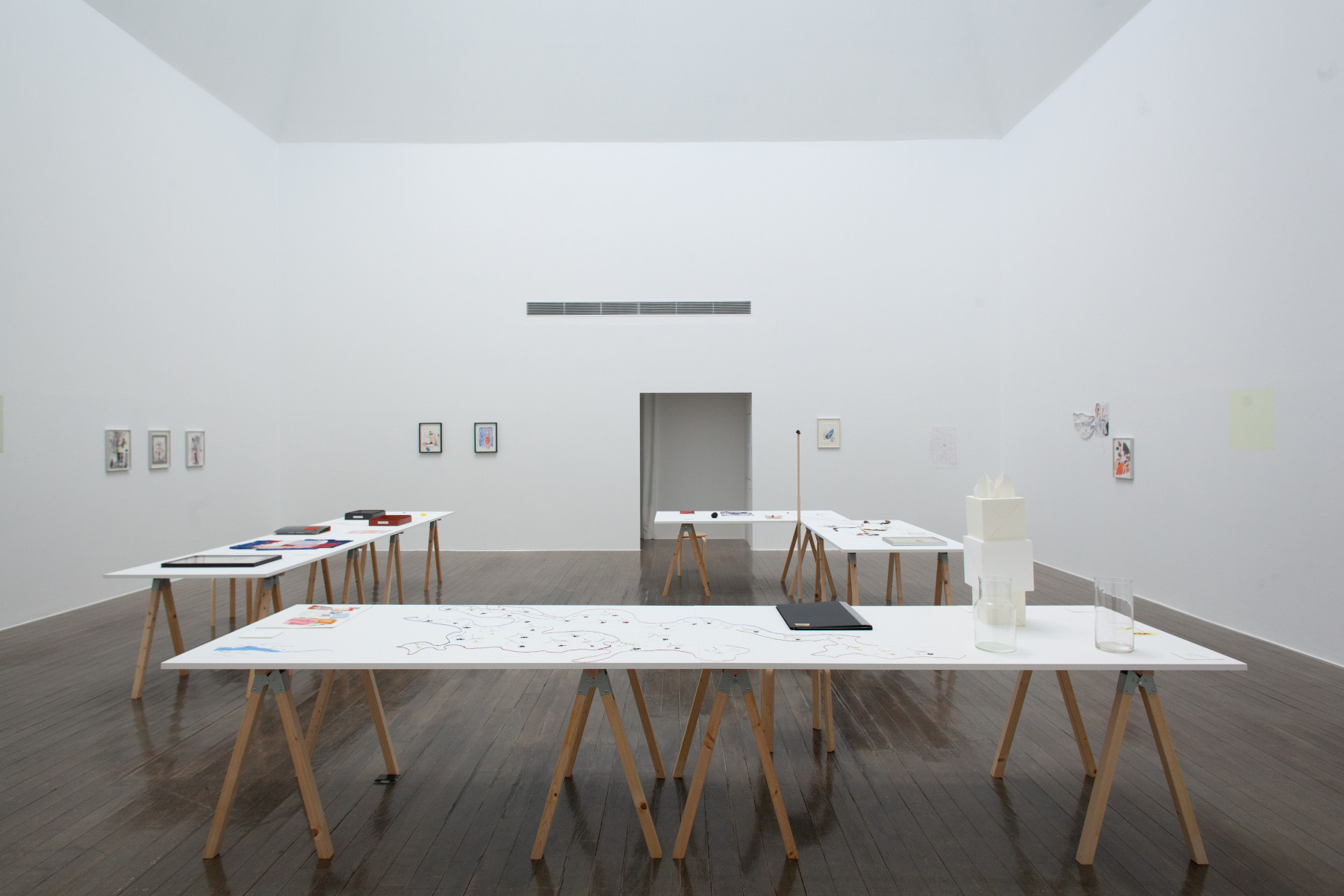
Ryoko Aoki, Notebook Forgotten at a Three Party Meeting, 2018. Installation view. Photography: Emi Nakata
Elsewhere in the exhibition, the preservation of lived knowledge is put forward as another viable act of care. Mei Homma’s beautiful film Bodies in Overlooked Pain (2020), which teeters between infomercial and choreography video, sheds light on the knowledge lost when the Dukun Bayi (traditional Indonesian midwives) were phased out of their profession during the period of Dutch colonisation. Dressed in pastel maternity wear, the characters in Homma’s film engage in an impeccably staged birthing class, where they share their wisdom on plants, herbs and massage techniques that could aid with pain relief during childbirth. The video’s narration—based on interviews Homma conducted with the Dukun Bayi—gives a grim insight into how Western medicine came to have an increasingly tight grip over women’s reproductive functions, the after effects of which are still felt in East Asian countries such as Japan and Indonesia.
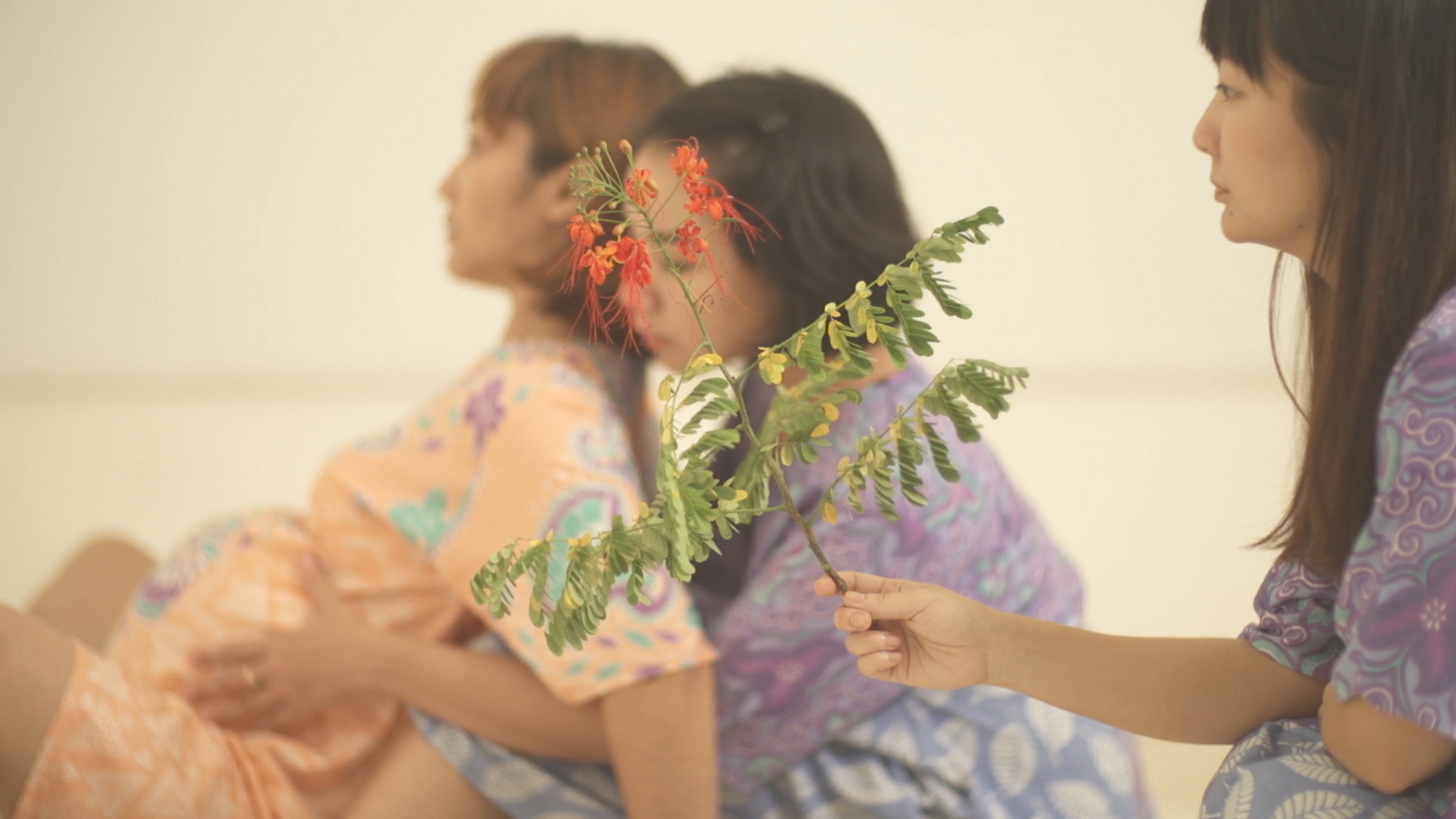
Homma Mei, Bodies in Overlooked Pain, 2020. Filmstill. Image courtesy the artist.
Other works centre the balance between providing aid and finding relief, between offering a helping hand and becoming a burden. Kento Nito’s participatory artwork Steps on Someone’s Weight (2016-2021) offers viewers an embodied experience of what that balance might feel like. The exhibition in Mito shows a wooden contraption that allows two viewers to stand on each other’s soles. The interaction, that is equal parts psychological and physical, specifies the needs of the cared for (standing on top), compensated by the strength and control of the caregiver who lies below—and brings attention to the underlying power dynamics. The upwards motion of supportive prowess meets the pressing weight of human dependency in perfect symmetry. This motive is also present in the accompanying wall paintings and drawings, which were commissioned especially for the exhibition. In his works, Nito often uses bodily contact as a means to trigger muscle memories of care that might have laid dormant in a world governed by modern technology.
From bodily contact to bodies out of touch. An imprisoned gorilla is the somewhat frumpish protagonist of Liesel Burisch’s Gorilla Milk (2020), a film that was assembled from impromptu video footage taken at the Budapest Zoo and vlogs by primate aficionado Csilla Frank. Frank and Burisch commiserate with the gorilla—also called Liesel—whose sagging breasts and subsequent infertility cost her the affection of the audience, the staff and—ultimately—her troop. The film is a grim reminder of how birthing bodies are expected to return to youthful and fertile normalcy after delivering. Caregiving duties and beauty ideals appear to be wholly incompatible. Liesel’s depressing predicament gets reaffirmed in the subtitles (“What is left of you when you are no longer neither fertile nor desirable?”), though Burisch—through strikingly intimate shots—manages to catch and centre the animal’s queer beauty.
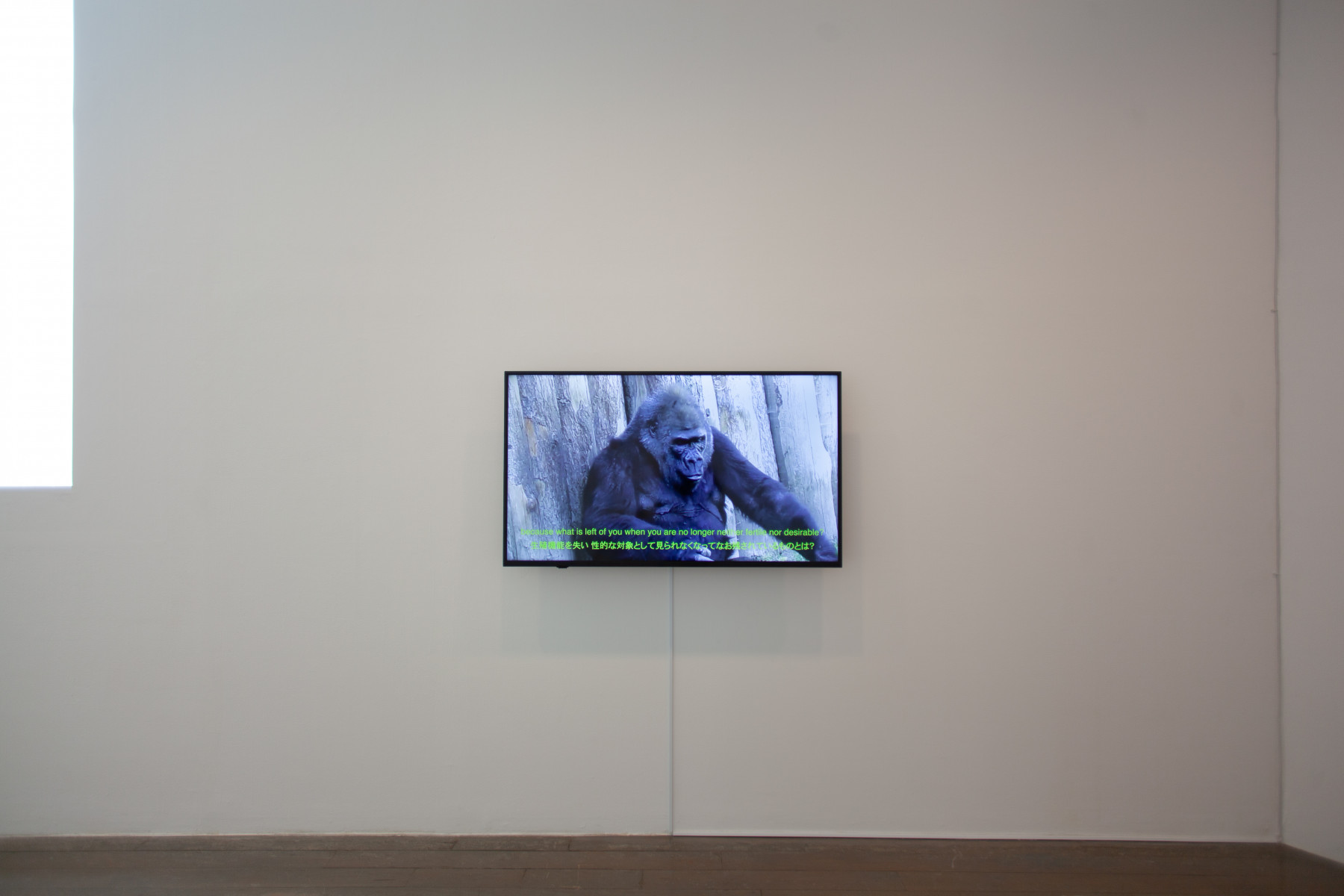
Liesel Burisch, Gorilla Milk, 2020. Installation view. Photography: Emi Nakata.
In many ways When? Where? By Whom? For Whom? Why? How?—Thinking about Caring and Motherhood through Contemporary Art achieves what Mierle Laderman Ukeles set out to do when she envisioned her Care show. Various narratives and strategies of care, some more subtle than others, are weaved seamlessly throughout the exhibition spaces. The varied artistic positions do well to tackle care as an elastic concept that can lay bare complex power structures, unfair divisions of labour or an overreliance on technology. Embracing alternative strategies of maintenance has the potential to positively inform (and transform) our daily interactions with friends, colleagues, community members and/or loved ones. It can even affect the relationship we have to ourselves. Care can thus be joyous, hopeful, queer, communal, overwhelming, political, intimate, burdening or even humorous…but it’s always indispensable.
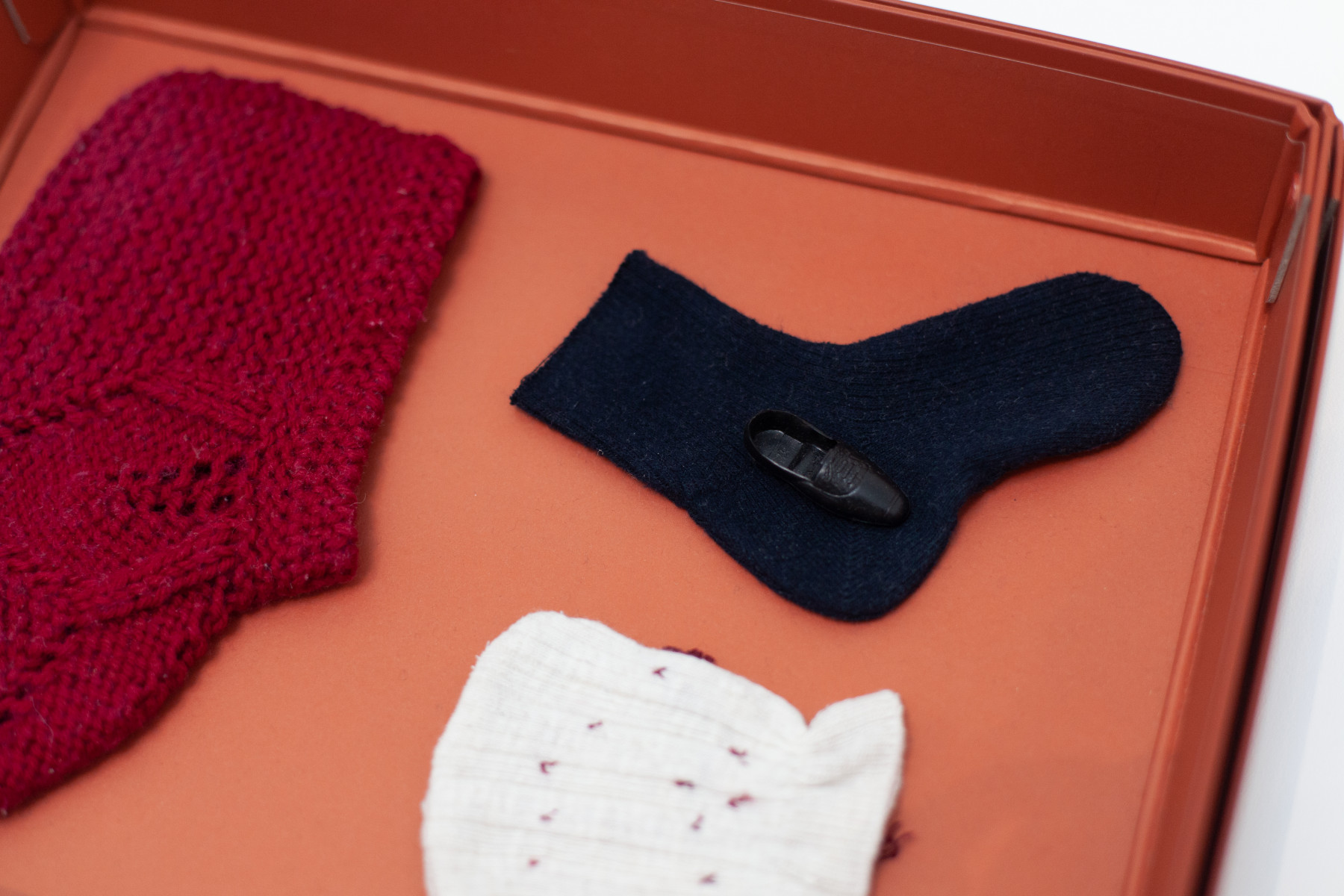
Ryoko Aoki, Notebook Forgotten at a Three Party Meeting, 2018. Detail. Photography: Emi Nakata

Kento Nito, Steps on Someone's Weight, 2016-2021. Courtesy of LEESAYA
[1] Exhibition brochure text: https://www.arttowermito.or.jp/english/gallery/lineup/article_5188.html.
[2] One of the first exhibitions on the topic of ‘gender’ was Gender – Beyond Memory (1995) curated by Michiko Kasahara at the Tokyo Photographic Art Museum. In 2005, Reiko Kokatsu curated the historical survey exhibition Japanese Women Artists in Avant-garde Movements, 1950–1975 at the Tochigi Prefectural Museum of Art. Other notable examples are the exhibitions Women Breaking Boundaries (2000) and Borderline Cases (2005), organized by feminist artist collectives Women’s Art Network and Feminist Art Action Brigade, respectively.
When? Where? By Whom? For Whom? Why? How?—Thinking about Caring and Motherhood through Contemporary Art
18/02 – 07/05/2023
With works by AHA! (Archive for Human Activities), Liesel Burisch, Maria Farrar, Hong Young In, Nito Kento, Ragnar Kjartansson, Idemitsu Mako, Homma Mei, Ishiuchi Miyako, Joanna Rajkowska, Aoki Ryoko, Martha Rosler, Yun Suknam, Mierle Laderman Ukeles, and Usui Yui.
Curated by Oko Goto.
Contemporary Art Gallery, Art Tower Mito
1 Chome-6-8 Gokencho, Mito
Ibaraki 310-0063
Japan